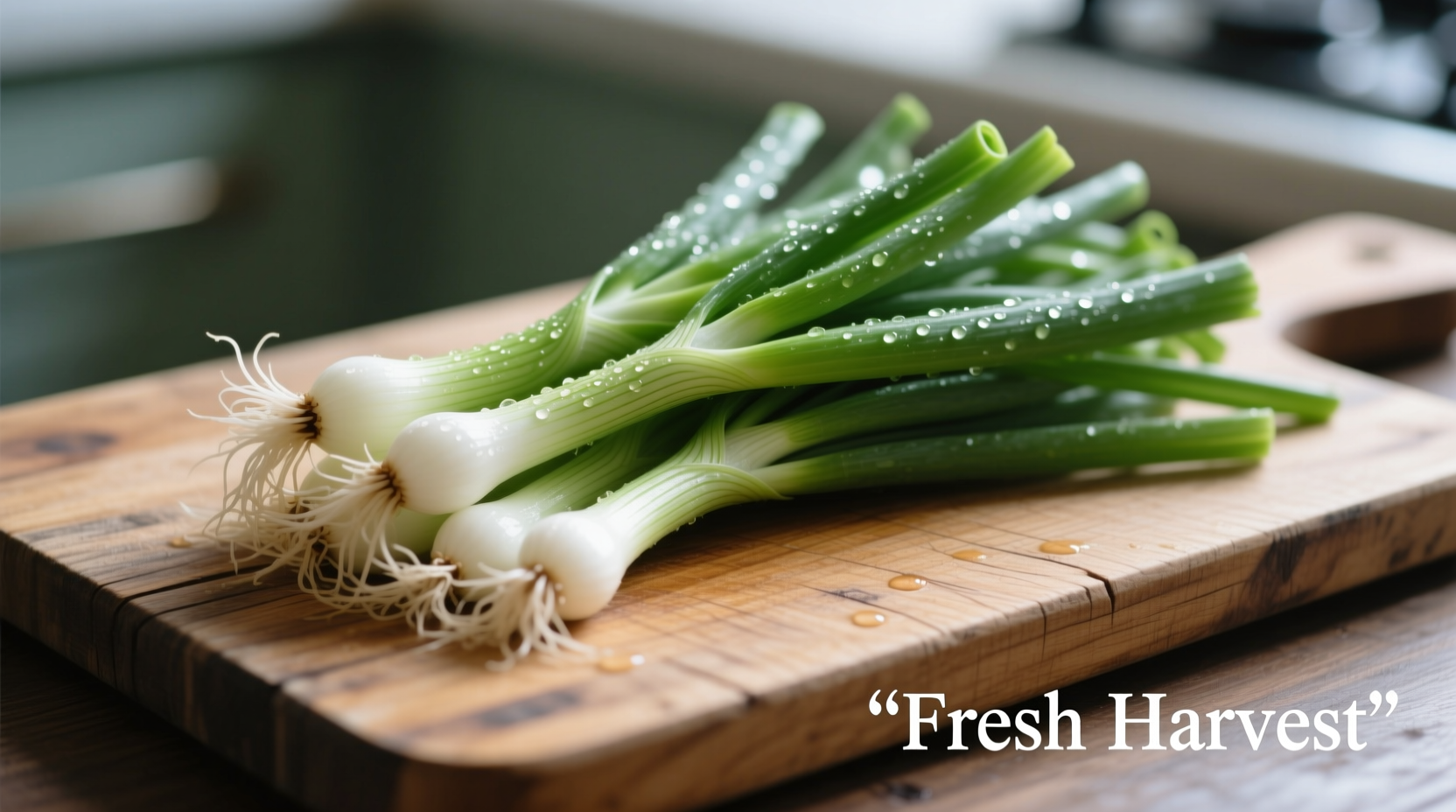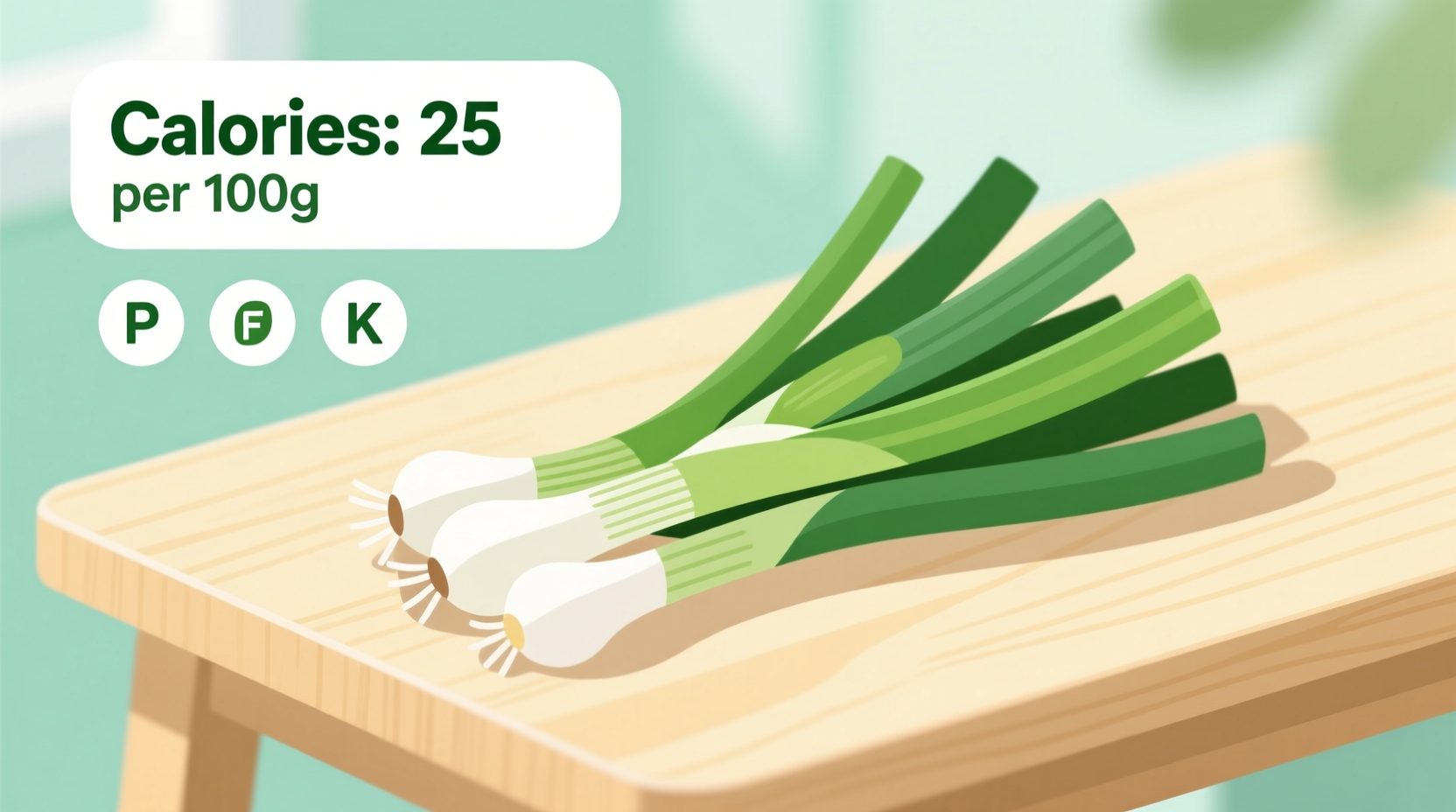Curious about how green onions fit into your healthy eating plan? You're not alone. Thousands search for calories in green onion daily as they track their nutrition. Whether you're meal prepping, watching your weight, or simply curious about this kitchen staple, you'll find precise, science-backed information here—no guesswork required.
Nutritional Profile of Green Onions: The Essential Facts
Green onions, also known as scallions, offer remarkable nutritional value with minimal calories. According to the USDA FoodData Central database, here's exactly what you get in a standard serving:
| Nutrient | Per 100g | Per Medium Green Onion (28g) |
|---|---|---|
| Calories | 32 kcal | 5 kcal |
| Total Carbohydrates | 7.3g | 2.0g |
| Dietary Fiber | 2.6g | 0.7g |
| Sugar | 2.7g | 0.8g |
| Protein | 1.8g | 0.5g |
| Vitamin K | 207μg (173% DV) | 58μg (48% DV) |
| Vitamin C | 18.8mg (21% DV) | 5.3mg (6% DV) |
This nutritional breakdown comes directly from the USDA FoodData Central, the most authoritative source for food composition data in the United States. Notice how green onions deliver impressive vitamin content while remaining extremely low-calorie.
How Green Onions Compare to Other Alliums
If you're tracking calories in green onion versus other onion varieties, the differences matter. Understanding these distinctions helps you make informed choices for your dietary goals:
- Green onions (scallions): 32 calories per 100g - highest water content (92%) and lowest calorie density
- Yellow onions: 40 calories per 100g - slightly higher in natural sugars
- Red onions: 40 calories per 100g - similar to yellow onions but with additional anthocyanins
- Shallots: 72 calories per 100g - significantly higher calorie density
- Leeks: 61 calories per 100g - more substantial carbohydrate content
This comparison reveals why green onions are particularly valuable for those seeking low calorie vegetable options. Their high water content means you can add substantial flavor and volume to dishes without significant caloric impact.
Health Benefits Beyond Calories
While the calories in green onion are minimal, their nutritional contribution extends far beyond just being low-calorie. Research published in the Journal of Agricultural and Food Chemistry confirms that green onions contain organosulfur compounds that support cardiovascular health. These compounds, while present in all alliums, remain particularly bioavailable in the raw green onion form.
One standout nutrient is vitamin K. A single medium green onion provides nearly half your daily requirement. According to the National Institutes of Health, adequate vitamin K intake is crucial for proper blood clotting and bone metabolism. This makes green onions especially valuable for those following weight loss diets that might otherwise lack sufficient vitamin K.

Practical Ways to Use Green Onions in Your Diet
Knowing the calories in green onion is just the beginning. Here's how to maximize their nutritional impact in your daily eating:
For Weight Management
Add generous portions to dishes where you'd typically use higher-calorie ingredients. Two tablespoons of chopped green onions (about 8g) add just 1.3 calories while providing flavor, texture, and nutrients. This makes them perfect for:
- Replacing higher-calorie garnishes like cheese or croutons
- Adding volume to egg whites or protein scrambles
- Enhancing soups and broths without adding significant calories
For Maximum Nutrient Retention
Unlike many vegetables, green onions retain most nutrients when used raw. The vitamin C and organosulfur compounds degrade with heat, so for green onion nutrition facts that deliver maximum benefit:
- Add them at the very end of cooking
- Use both white and green parts (the green portion contains more vitamin C)
- Store properly in the refrigerator with roots submerged in water
Common Questions About Green Onion Nutrition
Let's address some frequent questions about calories in green onion that often confuse home cooks and health-conscious eaters:











 浙公网安备
33010002000092号
浙公网安备
33010002000092号 浙B2-20120091-4
浙B2-20120091-4